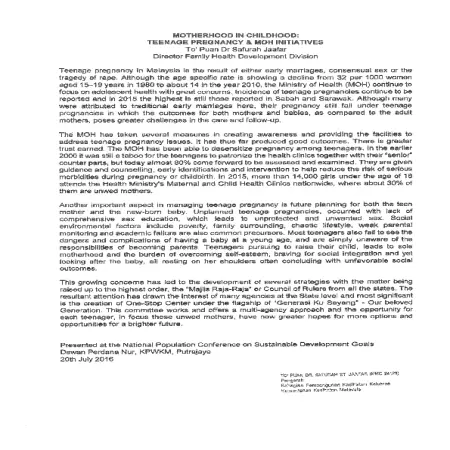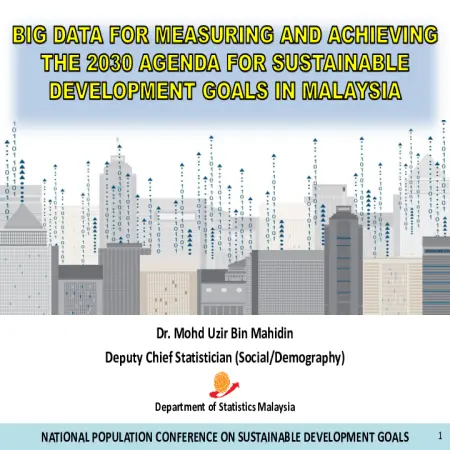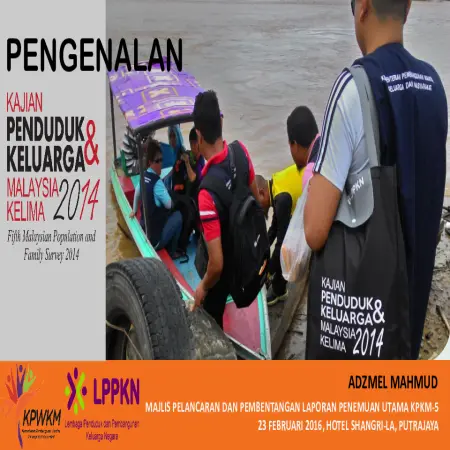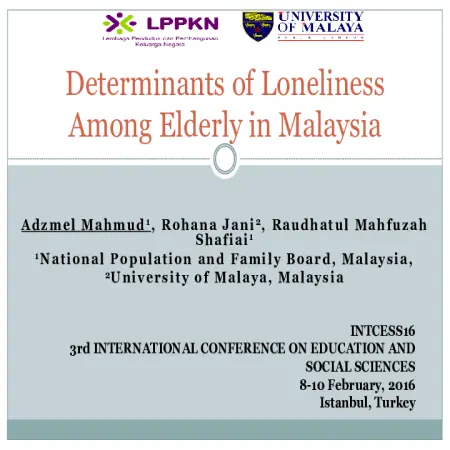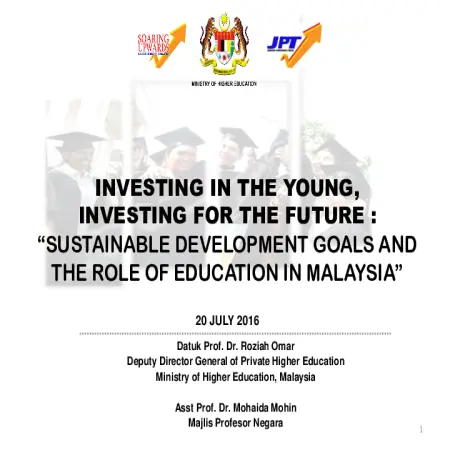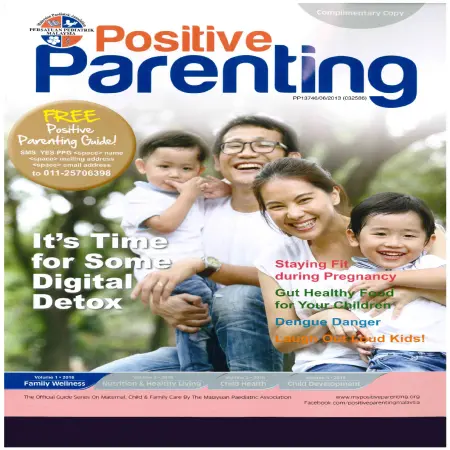Advanced Search
|
Motherhood in childhood: teenage pregnancy & MOH initiatives
Item Type: Conference or Workshop Item
Year: 2016
Abstract: Teenage pregnancy in Malaysia is the result of either early marriages, consensual sex or the tragedy of rape. Although the age specific rate is showing a decline from 32 per 1000 women aged 1-19 years in 1980 to about 14 in the year 2010, the Ministry of Health (MOH) continue to focus...[Read More]
|
|
|
|
|
|
Big data for measuring and achieving the 2030 agenda for sustainable development goals in Malaysia
Item Type: Conference or Workshop Item
Year: 2016
Abstract: The Sustainable Development Goals (SDGs) have set 17 goals and 169 related targets to be achieved by 2030. In line to support SDGs indicators, Big Data plays a pivotal role to achieve the aspiration by providing real time information and evidence-based decision making through the...[Read More]
|
|
|
|
|
|
Pengenalan Kajian Penduduk dan Keluarga Malaysia Kelima 2014
Item Type: Conference or Workshop Item
Year: 2016
Abstract: The objective of this study to provide time series data related to demographic and socioeconomic information and to be source of data for national socioeconomic planning. Tha last objective is to evaluate the efficiency and effectiveness of planning and implementation of policies,...[Read More]
|
|
|
|
|
|
Determinants of loneliness among elderly in Malaysia
Item Type: Conference or Workshop Item
Year: 2016
Abstract: As of 2014, there is an estimated of 2.7 million elderly in Malaysia or 8.9% out of the total population of 30.3 million. Recent projections estimated that Malaysia will become an ageing nation by 2035 when 15% of the population falls into this group. As the number of the elderly...[Read More]
|
|
|
|
|
|
Living the 'reduce, reuse and recycle' lifestyle
Item Type: Conference or Workshop Item
Year: 2016
Abstract: In this presentation, the author will emphasise the urgency for "living the ‘reduce, reuse & recycle’ lifestyle” because humanity is living well beyond the ecological limits of one planet. Based on ecological footprint analysis, a tool for measuring sustainability, the biocapacity for...[Read More]
|
|
|
|
|
|
Investing in young people: matching education with employment needs
Item Type: Conference or Workshop Item
Year: 2016
Abstract: Education has always been the engine of growth for Malaysia. Malaysia aspiration to become a high income nation by 2020. Multi-prong strategies which include access to education for all among the pillars to transforming the nation. Malaysia has always been embracing with the strategies...[Read More]
|
|
|
|
|
|
Corporate initiatives in empowering societies
Item Type: Conference or Workshop Item
Year: 2016
Abstract: Digi’s ambition is to enable the Internet in the hands of every Malaysian for youth, children, women, the underserved, netizens and more. We passionately believe that all Malaysians should be given the opportunity to benefit from the power of the internet. Empower Societies is our...[Read More]
|
|
|
|
|
|
Analisis strategi kelangsungan hidup migran pekerja Bugis Indonesia ke Sabah
Item Type: Conference or Workshop Item
Year: 2016
Abstract: Bugis migration to Sabah especially the Tawau Division in the 19th Century not only had provided the workforce but also created the early Bugis community in Sabah. They had assimilated with local people and become Malaysian citizens after the formation of Malaysia in 1963. Bugis...[Read More]
|
|
|
|
|
|
Disconnect digitally, reconnect emotionally
Item Type: Article
Year: 2016
Abstract: Without a doubt, digital is the future. However, we do need to know where to draw the line and prevent ourselves from overindulging in it. Failure to do so could lead to digital addiction. It is fairly common nowadays to see parents handing their smartphone or tablet to their child to...[Read More]
|
|
|
|
|
|
Preventing teenage pregnancies
Item Type: Article
Year: 2016
Abstract: An average of 18,000 teenagers in Malaysia get pregnant each year, 25% or about 4,500 cases involved out-of-wedlock pregnancy. Th e Fifth Malaysian Population and Family Survey conducted by NPFDB revealed that 4.8% of all teens have had sex at least once. The survey also found that...[Read More]
|
|
|
|
|





